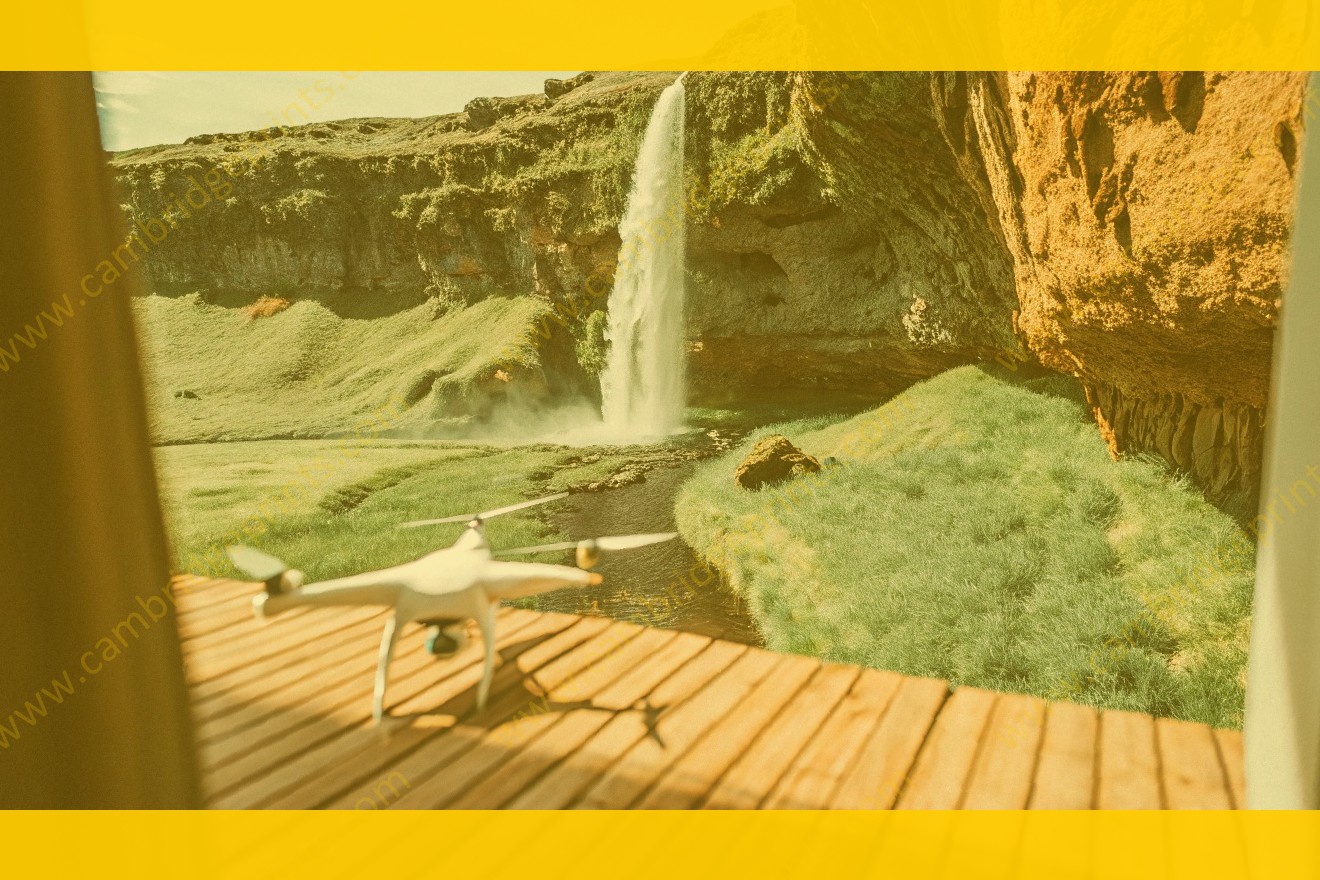An Overview of Drones and the Law in Iceland
Iceland, with its raw beauty and diverse landscapes, has quickly become a preferred destination for tourists, outdoor adventurers, and aerial photographers. But as drone technology becomes ubiquitous, so too do the rules governing its use in various territories. It is vital to understand these regulations before you take to the skies with your drone, particularly in a country known for its delicate ecosystems and exceptional natural wonders.
For those planning to visit Iceland, understanding the rules around operating drones is essential not only for compliance but for the safety of other visitors and wildlife . A knee-jerk use of aerial photography could, after all, be the difference between one’s camera capturing the serene beauty of a waterfall or spooking a puffin out of nesting season. Fines for violating drone laws in Iceland can reach as high as $30,000 (USD) or 3 years in prison, so it’s worth your while to be informed.
Whether you are an avid quadcopter pilot or a weekend hobbyist, understanding Iceland’s "no-fly" areas and general drone laws is crucial for the responsible use of this technology. In the following sections, we will navigate these regulations one by one, providing insights to help you fly drones safely and responsibly in Iceland, without breaking the law.
Do Icelandic Drone Laws Require Registration?
When it comes to the operation of drones in Iceland, there are specific registration requirements that must be adhered to. These registration requirements apply whether the drone is used for recreational or commercial purposes. In essence, all drones that are used for commercial activity and those with a maximum take-off mass of more than 1 kilogram require registration with the Icelandic Transport Authority (Samgöngustofa). Thus, drone operators in Iceland fall into three categories: For recreational drone use in Iceland, registration is not required and there are no limitations on the use of drones whatsoever. Standard aviation rules apply and drone operators are urged to adhere to the requirements set forth by the Icelandic Transport Authority to ensure their safety and the safety of others. To register a drone for commercial use, one must complete an application form to the Icelandic Transport Authority and pay a fee determined by the maximum take-off mass of the drone that is being registered. The application must be accompanied by a certificate of airworthiness issued by the Civil Aviation Authority in Iceland, an operator’s certificate, and an insurance policy that covers damage to third parties. Before approval is granted, the applicant may be subject to an inspection by the Icelandic Transport Authority, which will assess whether or not the aircraft can be flown safely in the vicinity of people.
Drone Flight Zones and Prohibited Areas
Iceland has designated certain areas where flying a drone is permitted, and certain areas where it is strictly prohibited or where special permission is required. For instance, the maximum height of any drone operation is 120m above ground level. Any drone flight above this height will require special permission from the Icelandic Transport Authority, and is strongly discouraged except in the presence of very special circumstances. Similarly, all drone operations must occur at least 150m away from any open-air event with more than 250 participants. Violating this restriction may result in very severe penalties.
Apart from these general restrictions, the Icelandic Transport Authority has deemed specific zones within its borders as either safe to fly drones or unsafe to do so. Within the safe zones, hobbyists and enthusiasts are mostly free to operate a drone without special consideration. Generally, the airspace of Iceland is divided into two types of zones. The first is the controlled airspace of the major international airports around the country, as well as the larger valleys, bays, fjords, and bodies of water throughout the country. Within these airspaces, specialty permission is required to operate a drone safely. These are generally the places you would expect to be especially off-limits to drone use.
The second general type of zone is the one that permits drone use. Practically, this will be most of Iceland. A bit of good news: The controlled airspaces are not all necessarily off-limits. The areas around minor airstrips, even if they are scalable by bigger aircraft, are not regulated in the same way as Keflavik, Akureyri, Reykjavik, Isafjordur, Egilsstadir and Reykjavik international airports. This means that a hobbyist can get a good deal of use out of a drone in Iceland, provided they pay close attention to the map and take precautions before using it in public.
Privacy and Security Considerations
When flying your drone in Iceland, you should be conscious of the privacy of the people around you. According to the Personal Privacy Act No. 77/2000, there are rules in place regarding the photographing and filming of individuals without their consent. Drone operators need to be careful to respect these laws, as violations can result in steep fines. It is recommended to avoid filming or photographing people without permission, especially in private areas such as backyards. Doing so could be considered an infringement on an individual’s privacy. Permission must also be obtained before filming in public areas where there are likely to be people present.
It is prohibited to fly a drone within 50 meters of people or dense crowds. The main reason for this is to avoid putting people at risk if the drone should malfunction or crash. Malfunctions are rare, but can occur, and can prove potentially deadly if a drone hits an individual. In case of any malfunctions of the drone, the operator is advised to closely monitor the drone and land it safely as soon as possible.
Drone operators are required to be aware of their surroundings at all times while flying a drone. When flying a drone , it is vital to maintain the ability to see the drone with the naked eye. Once a drone flies beyond the operator’s line of sight, it is recommended to land the drone immediately. If the drone is lost, the operator is not allowed to fly in that specific area until the drone is recovered. In addition, drone operators can only fly in the vicinity of other air traffic if the flight rules allow. The same guideline applies when it comes to being near military or police establishments, as permission is needed to fly a drone and drone operators can only fly in these areas if the flight rules allow. It is also prohibited to fly a drone near or over wild animals, as this can pose a risk to their safety as well as the safety of the drone.
There are some areas of Iceland where drones are not permitted. Drones are not allowed in national parks or on nature reserves. The reason for this restriction is that many areas may be inhabited by wildlife. The presence of drones poses a risk to the safety of wildlife in the vicinity. Moreover, it is generally not recommended to fly drones in areas where there is a danger of environmental damage or at sites of environmental sensitivity, such as volcanic areas.
Fines and Penalties Under Icelandic Drone Laws
The Icelandic Ministry of Transport and the Icelandic Transport Authority, in addition to treating drones as any other airborne craft, impose a number of penalties for violations of drone law. Such penalties range from confiscation of the drone, to fines, to potential arrest. Specifics of each penalty are set forth in the relevant statutes and regulations. For example, the law sets forth that any unmanned aircraft may be confiscated, if the person in charge of the drone is subject to legal consequence as a result of use of the drone under an applicable law or regulation, but there has been no confiscation of any drones to date. Also, violations for failing to obtain a permit for a drone flight carry a fine of ISK 250,000 (approx. USD 2,000) under law for first time offenders and ISK 500,000 (approx. USD 4,000) for repeat offenders. The law also imposes fines on those who violate the restrictions regarding operation of an unmanned aircraft in airspace for ISA 100,000 (approx. USD 800) for first time offenders and ISK 500,000 (approx. USD 3,900) for repeat offenders. The law further allows property owners to take appropriate legal action against any person who intentionally or negligently violates the rights of a property owner by using an unmanned aircraft. These legal remedies include injunctions and confiscation of property and a claim for damages or cessation of crimes according to general provisions in the law. While disappointingly, there have been no reported cases of arrests related to unmanned aircraft activity, the Ministry did announce in September 2018 that law enforcement was to be trained on use of unmanned aircraft. In the past there have been multiple arrests due to violations of aviation rules for unmanned aircraft in the vicinity of Mývatn Airport and the domestic airport in Reykjavík.
Best Practices for Responsible Drone Usage
Iceland’s diverse and stunning landscapes offer a unique backdrop for drone enthusiasts. To ensure a safe and responsible flying experience, it is essential that operators prepare appropriately for each flight.
Before heading out, check the weather forecast to determine if conditions are suitable for flying. Strong winds, heavy rain, or low visibility can not only affect the stability of your drone but also make it difficult to control during flight. Check for clouds and obstructions before heading out and keep track of sudden changes in weather conditions at your chosen location.
Each time before a flight , review and inspect your drone to confirm that it is in good working order. Pay particular attention to the following key areas:
· Propellers: Make sure that they are not damaged and that they are properly attached.
· Batteries: Ensure that batteries are fully charged before use and check the batteries on your controller as well.
· Your controller: Always check that this is functioning properly and that all controls are working as expected.
· GPS/Return Home Function: Make sure your unit has both GPS and Return Home functions enabled and that they are functioning properly before take-off.
Finally, consult your drone’s user manual and your home country’s regulations before flying. In many cases, there are limitations as to what a unit can do in certain areas, such as city centers, which could impact functionality, cutting it out mid-flight.


+ There are no comments
Add yours